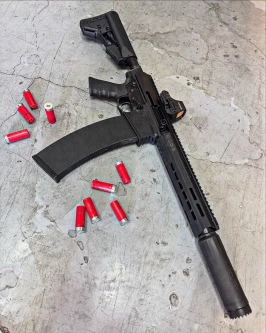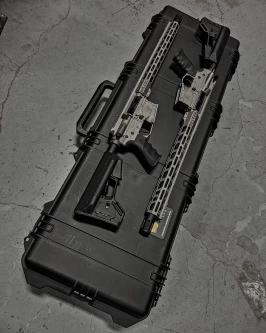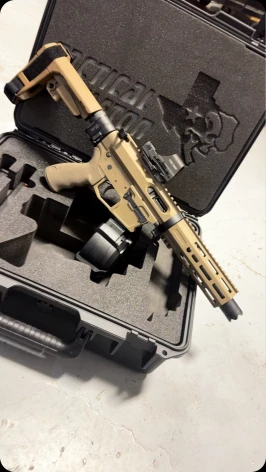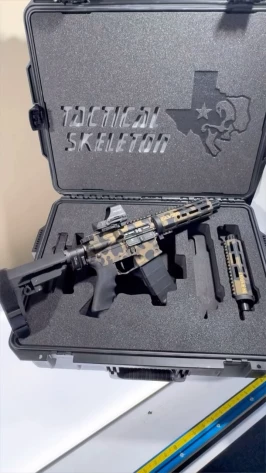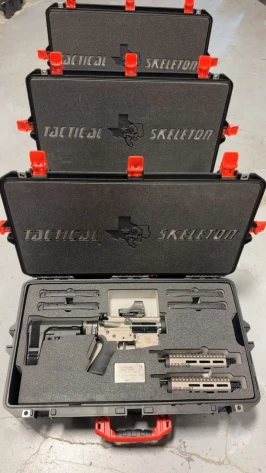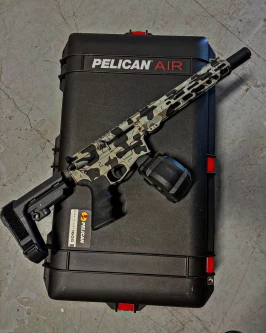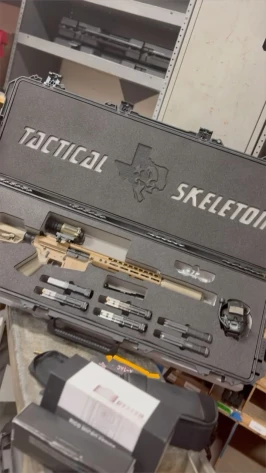Ideal Barrel Lengths for a Short Barreled Rifle (SBR) in 5.56 and .300 Blackout
Short Barreled Rifles (SBRs) are an increasingly popular choice among gun enthusiasts for their maneuverability, versatility, and tactical advantage in close-quarters situations. However, choosing the right barrel length is crucial, especially when dealing with specific calibers like 5.56 NATO and .300 Blackout. In this blog post, we’ll dive into the ideal barrel lengths for SBRs in these two calibers, examining their performance characteristics and the trade-offs involved.
1. Understanding Barrel Length and Its Importance
Barrel length plays a critical role in the overall performance of a rifle. In SBRs, shorter barrels result in greater maneuverability, making them ideal for close-quarters combat (CQC), home defense, and vehicle operations. However, shorter barrels can also reduce bullet velocity, affect terminal performance, and create challenges with gas pressure and noise. The key is to find the balance between compactness and effectiveness.
2. Barrel Length Considerations for 5.56 NATO
5.56 NATO is a widely used caliber for both military and civilian applications. It performs best out of longer barrels, but there are several optimal lengths to consider when configuring an SBR:
a. 10.5 Inches
A 10.5-inch barrel is one of the most common and effective choices for a 5.56 SBR. This length offers a balance between compactness and maintaining sufficient velocity. Key benefits include:
- Maneuverability: The short barrel allows for easy movement in confined spaces.
- Effective Range: It retains enough velocity for effective engagements up to around 200 yards.
- Reliability: Many modern gas systems, such as carbine-length systems, are optimized for this barrel length, ensuring reliable cycling.
The trade-off here is that the bullet velocity drops significantly compared to a standard 16-inch barrel. As a result, you may experience reduced terminal performance, particularly at longer ranges.
b. 11.5 Inches
An 11.5-inch barrel is another solid option for a 5.56 SBR. It provides a slight velocity boost over a 10.5-inch barrel, making it a favorite for users looking for a bit more range and energy without sacrificing too much compactness.
- Improved Ballistics: The extra inch can add 50–100 feet per second (fps) of muzzle velocity, enhancing terminal ballistics and increasing effective range.
- Gas System Efficiency: The slightly longer length can improve the dwell time and reliability of the gas system, reducing the likelihood of malfunctions.
While it’s only an inch longer, this setup offers an improved balance for users who want both compactness and effective range.
c. 12.5 Inches
A 12.5-inch barrel is on the longer side for SBRs but offers better velocity and ballistic performance. This length is particularly popular among users who want an SBR that can still reach out beyond 300 yards.
- Versatility: This length gives you a rifle capable of handling both CQC and mid-range engagements.
- Reduced Muzzle Blast: The added length helps mitigate some of the muzzle blast and flash that shorter barrels are known for.
The primary downside is that it’s less compact than shorter barrels, so it may not be ideal for those who prioritize maneuverability above all else.
3. Barrel Length Considerations for .300 Blackout
.300 Blackout (BLK) was designed specifically for SBRs and suppressed shooting, making it an excellent choice for those wanting a versatile SBR platform. The caliber’s performance is optimized for shorter barrels, which is why it’s commonly paired with lengths shorter than those used for 5.56 NATO.
a. 8 Inches
An 8-inch barrel is an ideal length for .300 Blackout, particularly if you intend to run subsonic ammunition. This length maximizes the round’s performance while keeping the rifle extremely compact.
- Subsonic Performance: The .300 Blackout performs exceptionally well in subsonic form with this barrel length, especially when paired with a suppressor.
- Suppressed Shooting: Shorter barrels and suppressors go hand-in-hand, and an 8-inch barrel gives you the ideal length for optimal maneuverability while retaining effectiveness.
However, for supersonic loads, velocity may drop, so effective range and terminal performance beyond 150 yards could be limited.
b. 9 Inches
A 9-inch barrel is a versatile option that offers slightly increased velocity and range over an 8-inch barrel without sacrificing too much compactness. It’s a popular choice among those who want a little more energy while maintaining the benefits of an SBR setup.
- Improved Ballistics: This length provides enough muzzle velocity to make both supersonic and subsonic loads effective, offering versatility for a variety of shooting scenarios.
- Balance: It’s still compact enough for easy maneuverability, especially with a suppressor, and offers a good balance between CQC capabilities and longer-range engagement potential.
c. 10.5 Inches
If you prefer supersonic .300 Blackout loads or want to maximize your effective range, a 10.5-inch barrel is a good option. While not as compact as shorter lengths, it still provides the compactness expected from an SBR while ensuring improved ballistics.
- Supersonic Optimization: The added length allows for better supersonic performance, increasing velocity and energy delivery at extended ranges.
- Flexibility: This length offers a bit more versatility, allowing the rifle to transition between CQC and longer-range scenarios more effectively.
The trade-off is, of course, reduced maneuverability compared to an 8 or 9-inch setup, but for those who want to stretch the capabilities of .300 Blackout, it’s a worthy compromise.
4. Final Thoughts
Choosing the right barrel length for your SBR depends on your intended use, caliber preference, and the balance you want between compactness and ballistic performance:
- 5.56 NATO: Opt for a 10.5 to 12.5-inch barrel for a balance between maneuverability and effective range.
- .300 Blackout: An 8 to 10.5-inch barrel provides the optimal platform, particularly for suppressed or subsonic use.
No matter your choice, make sure you comply with all federal, state, and local laws regarding SBRs, as they fall under the jurisdiction of the National Firearms Act (NFA) in the United States. Always consider the role of a suppressor when determining barrel length, as it can significantly impact the overall length and handling characteristics of your setup.
By selecting the right barrel length, you can maximize the effectiveness of your SBR and tailor it to your specific needs and preferences.
